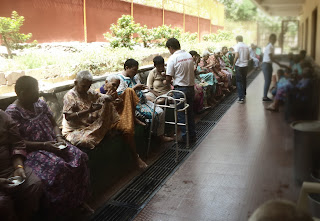Dalit in India
The social stratification in India is complex in nature. There are different groups who perceive & self-proclaim themselves at different levels of social status based on their caste, work, wealth, their past, color, region, religion & race. We are a union of states. Before the Independence, it was all fragmented regions. Later on, the integration took place and more than 550 independent regions were brought under the constitution with the efforts of political leaders. Many quoted that with so much cultural diversity, India would not live up for long. Our constitution indeed fructified and was able to hold everyone together. It could not have been possible with the provisions of Fundamental Rights offered to the dwellers. We proclaimed socialist, democratic, Republic from the beginning. It was designed to try to bring everyone at one par. Contrary to countries like France, we were more dealing with caste than class in society. There were people who for centuries are looked down upon and it was not related to just one religion. Practices like untouchability were deeply ingrained within society. These groups were discriminated for all the basic materials and facilities. In fact, they were not treated as humans. They were not seen as human. Lowest of the work were assigned to them. At places, their sights were even unfortunate. Some called them untouchables, others named them Dalit etc. other names based on their regional castes. They were derogatory terms. Although we have travelled a long journey since the independence, there are stances which prove that it has not been completely wash off from the people’s memory. At other places like major urban areas situation have improved but still asking caste while introduction in some areas is a general norm. There is also news of NRIs engaged in Casteism and calling names.
There are 4 Varna in Hinduism as quoted in Vedas – Brahmins, Kshatriyas, Vaishyas and Shudras. They were written down by the sages who were themselves Brahmins. It was supported by the religious texts. However, the indiscipline in this system brought centuries of misfortune. The basis of the system is that there is flexibility & Varna could be changed. Also that the Brahmans, Kshatriyas & Vaishyas will take care of the need of the Shudras. But later on, the Shudras were confined, discriminated and left out. There are instances in Ramayana where untouchability was seen as social evil yet at other stories the system is tried to be maintained. These are mythological texts which to some are a reading for entertainment & to some their only reality. There are different interpretations drawn upon by different people who read it. This twisted the system and brought several superstitions over time. During the 18th centuries, there were many organizations like Brahma Samaj, the leaders of which tried to learn from all the texts and could draw some conclusion & in turn communicate the masses. We could also find the inscriptions during the time of Asoka written almost 2300 years ago where the king appealed for the just treatment of the slaves, servants & the women. Buddhism indeed formed out of Hinduism as a separate sect but later on many so-called lower castes & untouchables converted to Buddhism. It helped them rejuvenate their life & bring dignity to it. Many also converted into Sikhism, Christianity & Islam. This proves that this is an age-old practice.
Generation after generations acquired the pride of belonging to the upper castes. There were conflicts within the caste itself, i.e. various sub-castes developed. It was hierarchy within hierarchy & more conflicts. The society grew more irrational, complex and divided. People within sub-castes claimed superiority against another. We must appreciate our constitution for bringing the substantial change into the fold in few decades. But now what is the situation & how it should be dealt with? What should be the way forward to prohibit other groups acquiring the status quo & form yet another group? How should further division be prevented or the reversal into earlier times? What is the role of the current generation who are least prejudice? Is it also the time that a country wide yet another movement & awareness run? Is it also the time to sway & redirect the constitution into a more effective form? The answer may be yes.
We have seen how there is no check in caste politics. Rural people are the most affected. Endogamy could still lead to a social boycott. In fact, leaving the upper class who can dare to change the status quo, the middle class is the most rigid. It should be noted that India is a developing country & most of the people are involved in daily hardships of life. These social factors are also intertwined with the economy of the people in places. However, there is a greater chance of reforms. Urbanization, privatization is already playing its role. There is a higher need for the reforms in Education. We need to develop human capital. The concept of reservation should be re-looked & re-launched. Overall we have greater pretext to move forward & make our nation stronger. We must involve in discussions & re-tell our stories. No group can claim superiority over another.


Comments
Post a Comment